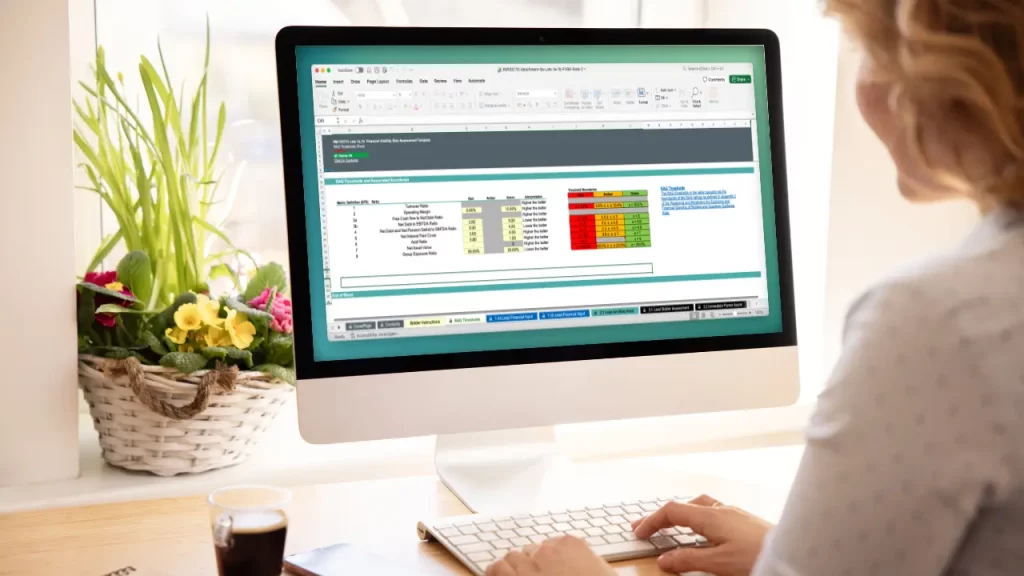The world of tenders is full of confusing terms—but don’t let that hold you back. This article spells out key tendering jargon like PQQ, ITT, MAT, and Social Value in plain English. If you’re a small business looking to win government contracts, this is your cheat sheet.
What is a PIN?
In the UK tendering process, PIN stands for Prior Information Notice.
A PIN is an announcement to let suppliers know about a future contract opportunity. It’s not a formal invitation to bid, but it gives early notice about what’s coming up. Sometimes, a PIN is used to gather feedback from potential suppliers before finalising the tender.
A PIN might include:
- A description of the upcoming contract
- The expected value and duration
- When the tender is likely to be published
- Contact details for more information
In simple terms:
PIN = A heads-up from a buyer, letting businesses know a contract is coming soon so they can prepare.
What is an EOI?
In the UK tendering process, EOI stands for Expression of Interest.
An EOI is a way for a company to show that it is interested in bidding for a contract. It’s usually the first step before a formal tender process begins. An EOI doesn’t mean the company is committing to bid, but it tells the buyer that it would like to be considered.
An EOI might include:
- Basic company details
- A short statement about why they are interested
- General qualifications or experience relevant to the contract
Submitting an EOI can sometimes lead to receiving a Pre-Qualification Questionnaire (PQQ) or an invitation to tender.
In simple terms:
EOI = Putting your hand up and saying, “Hey, I’m interested!” before the formal bidding process starts.
What is a PQQ?
In the UK tendering process, PQQ stands for Pre-Qualification Questionnaire.
It’s the first stage in the bidding process, where companies answer questions to prove they are suitable to bid for a contract. The purpose is to weed out companies that don’t meet basic requirements before they spend time preparing a full proposal.
A PQQ usually asks about things like:
- Company finances (to check you’re financially stable)
- Previous experience (to show you’ve done similar work before)
- Health and safety policies
- Insurance coverage
- Quality assurance procedures
If you pass the PQQ, you move on to the next stage, where you can submit a full bid. Some organisations now use a Standard Selection Questionnaire (SQ) instead of a PQQ, but the idea is the same – it’s a filtering step to find the most qualified bidders.
In simple terms:
PQQ (or SQ) = The first-stage check to see if your business is eligible to bid.
What is a SQ?
An SQ (Selection Questionnaire) is the new name for a PQQ (Pre-Qualification Questionnaire) – but they’re essentially the same thing! It’s a first-stage check to see if a supplier meets the basic requirements before bidding for a contract.
An SQ usually asks about things like:
- Company finances (to check you’re financially stable)
- Previous experience (to show you’ve done similar work before)
- Health and safety policies
- Insurance coverage
- Quality assurance procedures
If you pass the SQ, you move on to the full tender process, where you can submit a full bid.
In simple terms:
SQ = The first-stage check to see if your business is eligible to bid (formerly known as a PQQ).

What is an ITT?
In the UK tendering process, ITT stands for Invitation to Tender.
This is the next stage after the PQQ (or Selection Questionnaire), and companies that have passed the first round are asked to submit a full bid. The ITT is a detailed document that sets out precisely what the organisation wants and how suppliers should respond.
An ITT will typically include:
- Project details – What the buyer needs and the expected outcomes.
- Scope of work – What tasks and responsibilities the winning bidder will have.
- Evaluation criteria – How the buyer will assess the bids (e.g., price, quality, experience).
- Contract terms – The legal and financial conditions of the agreement.
- Submission instructions – Deadlines, formats, and required documents.
- Pricing details – A price breakdown to show buyers what they’re getting for their money.
At this stage, bidders submit their detailed proposals, explaining how they will deliver the project, their costs, timelines, and any added value they can offer. The buyer then reviews all bids, scores them based on the evaluation criteria, and chooses the best supplier.
In simple terms:
ITT = Give us your best proposal, and we’ll pick a winner.
What is an ITN?
In the UK tendering process, ITN stands for Invitation to Negotiate.
This is used in more complex procurements, where the buyer doesn’t just want a fixed proposal but wants to discuss and refine the terms with potential suppliers before awarding the contract.
Instead of just submitting a bid (like in an ITT), shortlisted suppliers enter into a negotiation phase with the buyer. This allows both sides to:
- Fine-tune project details
- Adjust pricing structures
- Clarify responsibilities
- Improve the overall value of the contract
An ITN is often used for large, strategic contracts where flexibility and collaboration are key, such as outsourcing major services or delivering complex infrastructure projects.
In simple terms:
ITN = Let’s discuss and refine your bid before we choose a winner.
What is an RFQ?
In the UK tendering process, RFQ stands for Request for Quotation.
This is used when buyers know precisely what they want and need suppliers to submit their prices and essential details. It’s a shorter, more straightforward process than an Invitation to Tender (ITT) and is usually used for lower-value contracts or straightforward purchases.
An RFQ typically includes:
- A clear specification of the product or service needed
- Quantity required
- Delivery deadlines
- Terms and conditions
- A deadline for suppliers to submit their quotes
Suppliers respond with their prices and availability, and the buyer picks the best offer based on cost, quality, and delivery terms.
In simple terms:
RFQ = Give us your best price for this specific thing.
What is an RFI?
In the UK tendering process, RFI stands for Request for Information.
An RFI is used by buyers to gather information from potential suppliers before launching a formal tender. It helps them understand the market, available solutions, and supplier capabilities. It’s not a bid request—just an early step to shape the procurement process.
An RFI might ask about:
- Company capabilities and experience
- Available products or services
- Pricing estimates (not final bids)
- Industry insights or best practices
In simple terms:
RFI = Tell us what’s out there and what you can do before we create the formal tender.
What are CQs?
In the UK tendering process, CQs stand for Clarification Questions.
These are questions that bidders can ask the buyer during the tender process if something in the documents is unclear. The aim is to get more details to ensure bidders fully understand the requirements before submitting their proposal.
CQs might cover:
- Technical specifications
- Deadlines or timelines
- Evaluation criteria
- Contract terms and conditions
Buyers usually provide a deadline for submitting CQs, and responses are often shared with all bidders to ensure fairness.
In simple terms:
CQ = Asking, “Can you explain this part?” so you don’t misunderstand the tender before submitting your bid.
What is a Framework?
A framework agreement is essentially a list of pre-approved suppliers that buyers can call upon when needed. Instead of awarding a single contract, the buyer creates a pool of potential suppliers who meet the criteria. Once you’re in the framework, you might still need to compete for individual pieces of work through mini-competitions, but being on the framework increases your chances of securing contracts over time.
In simple terms:
Framework Agreement = Making the football team, but not being guaranteed to play every game.
What is a Call-Off Contract?
If you’re in a framework, you might get a ‘call-off’—this means they’re giving you actual work from the framework agreement.
In simple terms:
Call-Off Contract = Having a spot on the football team and then finally getting picked to play.
What is MAT?
In the UK tendering process, MAT stands for Most Advantageous Tender.
This means that when evaluating bids, the buyer doesn’t just choose the cheapest option but considers multiple factors to get the best overall value. These factors can include:
- Price
- Quality of goods or services
- Experience and past performance
- Sustainability and social value
- Delivery timescales
The MAT approach ensures the contract is awarded to the bidder who offers the best balance of cost and quality rather than just the lowest price.
In simple terms:
MAT = The best overall deal, not just the cheapest price.
What is Social Value?
In UK tendering process, social value means the extra benefits a contract brings to society beyond just delivering the work. Public sector buyers want to see how suppliers can make a positive impact in areas like:
- Supporting local communities – Hiring locally, investing in skills, and helping small businesses grow
- Creating jobs & apprenticeships – Providing opportunities for disadvantaged groups
- Protecting the environment – Cutting carbon emissions, reducing waste, and using sustainable materials
- Promoting diversity & inclusion – Ensuring fair pay, equal opportunities, and good working conditions
- Health & wellbeing – Encouraging workplace wellbeing and community initiatives
Government contracts aren’t just about price—they’re about value to society. That’s why suppliers need to show how their work can make a difference.
In simple terms:
Social value = How your business helps people, communities, and the environment while delivering the contract.



